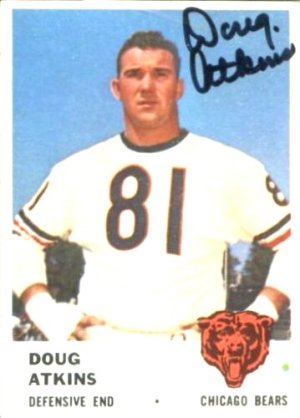Volosaurus rex
Doctorate in Volology
- Joined
- Dec 2, 2009
- Messages
- 5,983
- Likes
- 4,142
As many of you are undoubtedly aware, the Heisman Trophy was first awarded in 1935, although it was not designated as such until the following year. In 2008, the Sports Illustrated staff published a feature article (https://www.si.com/college/2008/12/12/early-heisman) in which they identified who they regarded as deserving of that award, had it existed from 1900 to 1934. For the sake of Tennessee fans, it should be noted that two of Neyland’s finest received the award retroactively.
1929: Gene McEver, Tennessee. The SI staff concluded that the “winner should have been Minnesota's Bronco Nagurski, whose team was just three points from an undefeated season,” but conceded the fact that “Nagurski was somewhat under-appreciated during his time. McEver, [on the other hand], helped put Tennessee football on the map by scoring 130 points in the Volunteers' 9-0-1 season. Nine of his touchdowns came from 25-plus yards and, in the finale against South Carolina, the halfback found the end zone five times” in a 54-0 rout.
1933: Beattie Feathers, Tennessee. Again, the SI staff described their selection of Feathers as “a bit of an upset, [with Feathers narrowly winning over] Cotton Warburton of top-ranked USC. Feathers grabbed the nation's attention early on with a pair of long touchdown runs in Tennessee's season-opening win over Virginia Tech. During his three years in Knoxville the Vols were 25-3-1. For that reason, the newly formed Southeastern Conference named Feathers its Player of the Year.”
As an NFL rookie in 1934, Feathers established records that I believe still stand. With 1,004 yards in eleven games, ten of which he started, Feathers became the “first player in NFL history to rush for over 1,000 yards in one season. His average of 8.44 yards per attempt that same year, [achieved on 119 carries], remains an NFL record (minimum 100 carries). As of 2019, his 91.3 yards per game is also a Bears rookie franchise record.” Courtesy of 6 pass receptions for 174 yards, his per-touch average is even higher: 125 for 1178 yards (9.4 yds) and 9 total touchdowns. See Beattie Feathers Stats, Height, Weight, Position, Draft, College | Pro-Football-Reference.com and Beattie Feathers - Wikipedia.
1929: Gene McEver, Tennessee. The SI staff concluded that the “winner should have been Minnesota's Bronco Nagurski, whose team was just three points from an undefeated season,” but conceded the fact that “Nagurski was somewhat under-appreciated during his time. McEver, [on the other hand], helped put Tennessee football on the map by scoring 130 points in the Volunteers' 9-0-1 season. Nine of his touchdowns came from 25-plus yards and, in the finale against South Carolina, the halfback found the end zone five times” in a 54-0 rout.
1933: Beattie Feathers, Tennessee. Again, the SI staff described their selection of Feathers as “a bit of an upset, [with Feathers narrowly winning over] Cotton Warburton of top-ranked USC. Feathers grabbed the nation's attention early on with a pair of long touchdown runs in Tennessee's season-opening win over Virginia Tech. During his three years in Knoxville the Vols were 25-3-1. For that reason, the newly formed Southeastern Conference named Feathers its Player of the Year.”
As an NFL rookie in 1934, Feathers established records that I believe still stand. With 1,004 yards in eleven games, ten of which he started, Feathers became the “first player in NFL history to rush for over 1,000 yards in one season. His average of 8.44 yards per attempt that same year, [achieved on 119 carries], remains an NFL record (minimum 100 carries). As of 2019, his 91.3 yards per game is also a Bears rookie franchise record.” Courtesy of 6 pass receptions for 174 yards, his per-touch average is even higher: 125 for 1178 yards (9.4 yds) and 9 total touchdowns. See Beattie Feathers Stats, Height, Weight, Position, Draft, College | Pro-Football-Reference.com and Beattie Feathers - Wikipedia.




